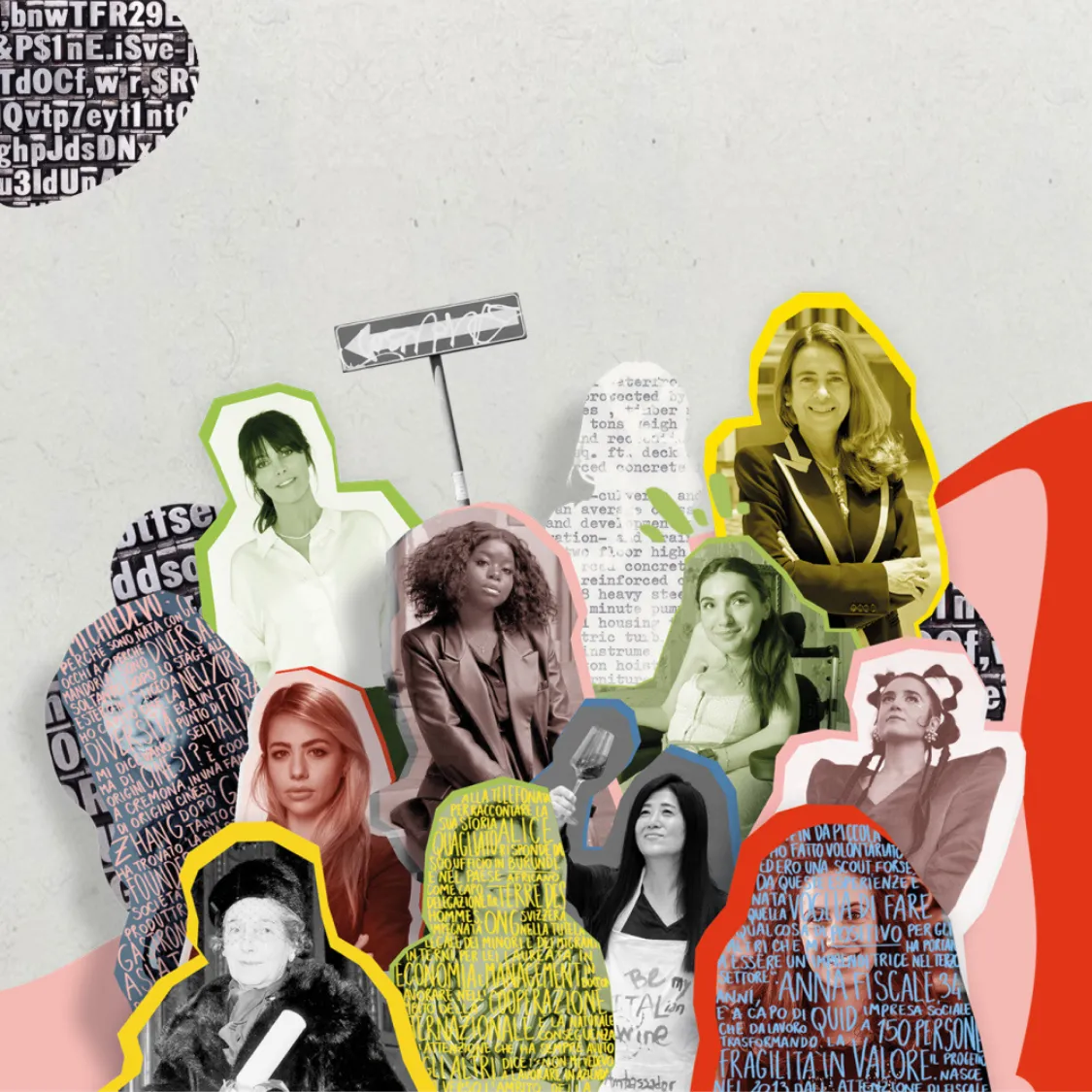
The Importance of Role Models
No country in the world has achieved gender equality. According to the World Economic Forum's latest Global Gender Gap Index (2023), the countries furthest ahead (Iceland, Finland, Norway, Sweden) have closed just over 80% of the gender gap, while the others are much further behind. The indicator measures four dimensions of inequality between men and women each year: economic opportunity, education, health and survival, and political empowerment. To date, the world has closed 96% of the gap in health, 95.2% of the gap in education, 60.1% of the gap in economic participation and opportunity, and only 22.1% of the gap in political empowerment. Italy ranks 79th out of 146 countries, 104th in economic size, among the lowest in Europe. If we look at the evolution over time, the data show a trend of improvement for all countries, but at the current rate of progress it will still take about 131 years to achieve equality between men and women in the world (162 years for political equality and 169 years for economic equality). If we confine ourselves to Europe, the area of the world with the best gender equality indicators to date, the estimated time needed to achieve parity is 67 years.
All countries are called upon to act with programs and policies to accelerate the process towards gender equality. First, because gender equality is a matter of justice and equal rights for men and women: the right to education, employment, career, economic independence and an equal role in society. But it is not only a matter of justice; gender equality is also a driver of economic growth. Development and economic growth have always gone hand in hand with gender equality, one reinforcing the other in a virtuous circle. According to the European Institute for Gender Equality (EIGE), promoting gender equality could increase GDP per capita in Europe from 6.1% to 9.6% by 2050. This is a gain of between €1.95 and €3.15 trillion.
The potential impact is greater in countries that start from a more backward position in terms of gender equality. In Italy, for example, the GDP gain could be around 12% in 2050. Similar conclusions have been reached by the World Bank, the OECD and the IMF, all of which now have a clear research and policy agenda to promote gender equality as a central element of the growth pathway. Growth linked to gender equality is characterized by being sustainable, i.e. it safeguards future generations economically, socially and environmentally. Indeed, Goal 5 of the UN Sustainable Development Agenda is to "achieve gender equality and empower all women and girls." Investing in gender equality therefore means not only achieving higher levels of GDP, but also the wellbeing and prosperity of current and future generations in a context of increasingly scarce resources.
What are the key steps to achieving this goal?
Let's start with education. Women are now at least as well educated as men. In all European countries, the percentage of women graduates is higher than that of men. However, when we look at the subjects studied, women are under-represented in STEM disciplines (Science, Technology, Engineering and Mathematics), which have higher returns on the labor market and steeper salary profiles. Focusing on STEM and reducing the gender gap in these disciplines is now a priority in all countries. Recent studies (see Profeta, 2020 for a summary) point out that this is not only the result of female students' preferences, but that the whole system pushes girls towards the humanities: teachers, families, types of tests used in schools, lack of role models. Even when the focus is narrowed down to Economics and Social Sciences, there are few female students in Finance and many more in business-related subjects. Providing role models specific to these fields can be a key factor in reducing the current differences.
Turning to the world of work, the differences are even more pronounced. Maternity remains a significant obstacle to women's work: the latest estimate of the so-called "child penalty" (Kleven et al., 2023) - the negative labor market impact of having a child for women compared to men, measured in terms of employment or wage losses - reaches 29% for the European average (with the lowest value in Denmark (14%) and the highest in the Czech Republic (49.7%)). On the other hand, women are more and more often opting not to have children; fertility rates are at their lowest, and the gap between desired and actual fertility is widening. Today, more children are born in countries where women work more: these are the countries that have put in place a welfare system and a policy framework that make it possible to reconcile work and family life and to share the burden of care between fathers and mothers. Nursery schools and paternity leave are measures that move in this direction.
There is a persistent cultural element - social norms - that assign different roles to men and women, and gender stereotypes that underlie gender gaps in the world of work. Countries with higher levels of female employment (and fertility) are those where individuals and companies have fewer stereotypes about the roles of men and women in society and the economy. For example, more than 52% of Italians agree with the statement "a pre-school child suffers if the mother works," and more than 25% agree with the statement "when jobs are scarce, men have more rights than women" (World Value Survey). In Sweden - a country with high female employment and gender equality - the agreement rates are 2.9% and 15% respectively. In addition to this explicit culture, there are many implicit stereotypes.
Even when they are working, women's careers are marked by numerous obstacles that prevent them from reaching top positions (the so-called "glass ceiling"). According to the EIGE, on average in Europe, women hold 34% of chair and board positions in the largest listed companies, with figures exceeding 40% in countries where gender quotas have been in place for years (Italy and France). Among CEOs, the figure is still only 22%. Yet the benefits of gender-balanced leadership are well known: selection is better (including of men), performance can increase, the decision-making agenda changes and becomes not only more effective but often more inclusive, creating space for policies and measures that can in turn promote gender equality (Profeta, 2020). Recent studies on the introduction of gender quotas on the boards of listed companies show that the inclusion of women on boards is associated with a better selection of all board members (men and women), with no negative impact on performance and a positive impact on stock returns (Ferrari et al., 2022 for Italy). The selection effect is also evident in studies on the presence of women in political decision-making positions.
As far as leadership, role models play an even more important role: women at the top of companies, politics, institutions and universities represent not only a possibility, but an achievement, an incentive
for young women and all women, a change in the culture of families, companies and institutions, a challenge and a victory over gender stereotypes in every context.


